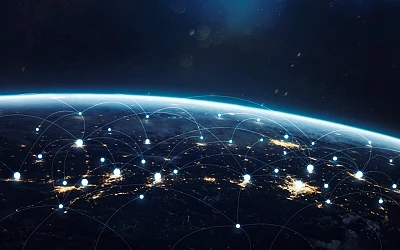The reinforcement of industrial and strategic autonomy to the benefit of, and benefiting from, the space sector, including as relates to critical materials and critical technologies, requires investment in capacitation and technology transfer.
Indeed, technology transfer in the space sector serves multiple purposes, facilitating commercialisation through the transfer of space technologies to the private sector, collaboration between different organisations and sectors, spin-off technologies that enable the creation of applications in non-space industries, and the sharing of knowledge and expertise between organisations. Capacitation and technology transfer help ensure a continuous exchange of knowledge, skills, and technologies, fostering progress and enabling the exploration and utilisation of space for various purposes.
In the EU, capacitation and the use of innovative technologies are expressly acknowledged in the Action Plan on Critical Raw Materials, with the Proposal for a Regulation concerning critical raw materials also referring to the need to boost research, innovation and skills. Likewise, the Communication A Chips Act for Europe and the Proposal for the Chips Act support large-scale technological capacity-building and innovation across the EU, highlighting the development of required technological capabilities and the transfer of knowledge from the lab to the fab, notably under the Chips for Europe Initiative. The actions under this Initiative will be primarily implemented through the Chips Joint Undertaking. The fostering of innovation and skills is also expressly mentioned in the Action Plan on synergies between civil, defence and space industries.
In addition, following the launch of the Call for Evidence in November 2022, in April 2023 the European Commission released a public consultation to collect feedback on the Technology Transfer Block Exemption Regulation (TTBER), which exempts certain agreements and practices from the EU’s general competition rules. The primary goal of the TTBER is to encourage research and development (R&D), facilitate technology dissemination, and promote competitiveness, all of which naturally also benefit the space sector.
Other initiatives for capacitation, technology transfer and collaboration in space have also been recently adopted.
For instance, Australia and the United States have preliminarily agreed on a technology safeguards agreement, which establishes a framework for the transfer of US space technology, enabling an increased capacity for launching American rockets and satellites from Australia. The agreement was announced by the Australian Prime Minister and US President in May 2023 during the G7 Summit in Japan.
In January 2023, India and the United States also unveiled partnerships in the fields of space, defence, semiconductors, and next-generation technologies.
In a similar vein, the UK and Japan recently signed a renewed science and technology agreement with the objective of introducing ground-breaking new technologies in the market and tackling key issues, including space sustainability.
Recently, Kenya and India also established a bilateral collaboration in the field of space exploration. And, in June 2023, the Intergovernmental Organization RCMRD, and the Botswana Institute of Geomatics signed a MoU to drive geomatics advancements in Botswana. Also, this month, UNOSAT and Rwanda Space Agency concluded a collaboration agreement in Geo-Information Technologies for Sustainable Development.
Note, in this respect, that OECD issued a paper on Space Technology transfers and their commercialisation in 2021.
Space Agencies also play a central role in this regard. For instance, the European Space Agency (ESA) Technology Transfer Programme Office (TTPO) has transferred over 200 space technologies to various non-space sectors. In the US, NASA Technology Transfer Program enables entrepreneurs and organizations to obtain licenses for NASA's patents and convert them into viable commercial products and solutions. And the German Aerospace Center (DLR) also develops research work and transfer and spin-off projects.
The important role of capacitation and technology transfer can also be seen in the landmark Treaty of the High Seas, aimed at protecting the ocean, tackling environmental degradation, fighting climate change, and preventing biodiversity loss. The Treaty addresses capacity-building and the transfer of marine technology in developing, implementing, monitoring, managing and enforcing area-based management tools, including in marine protected areas. Space technologies clearly play a central role in this respect. Indeed, the High Seas Treaty brings opportunities for an increased uptake of space services and data in support of the Treaty’s goals, including for its enforcement. For countries with ocean policy agendas, the Treaty can also play an especially relevant role in bringing together the space and marine sectors, building synergies between them. Likewise, institutions such as the Atlantic International Research Centre (AIR Centre), an international collaborative organisation that promotes an integrative approach to space, climate, ocean and energy in the Atlantic, can highly benefit from the new provisions arising from the Treaty.
The role of capacity building and technology transfer with impact in the space sector can also be seen, for instance, in EU Regulation (EU) 2023/1115, approved on 9 June to enter into force on 29 June 2023, concerning the making available on the EU market and the export from the EU of certain commodities and products associated with deforestation and forest degradation. This Regulation expressly acknowledges the role of digital technologies, geospatial information and capacity building in contributing to implementing this Regulation. Indeed, capacity building and investments in the supply chain are viewed as an adequate risk mitigation measure to ensure compliance with the terms of the Regulation. Given that geospatial information is singled out by the Regulation with a view to achieve its objectives, opportunities arise hereunder regarding capacity building and space technology transfer in the context of deforestation and forest degradation monitoring and mitigation products.
Awareness of the initiatives and approaches to capacitation and technology transfer in industrial strategies, including with respect to critical raw materials and technologies, as well as in new legal approaches such as that set forth in the Treaty of the High Seas, is essential to ensure that the space sector is able to take advantage of all these opportunities and become an active participant in the initiatives outlined.
